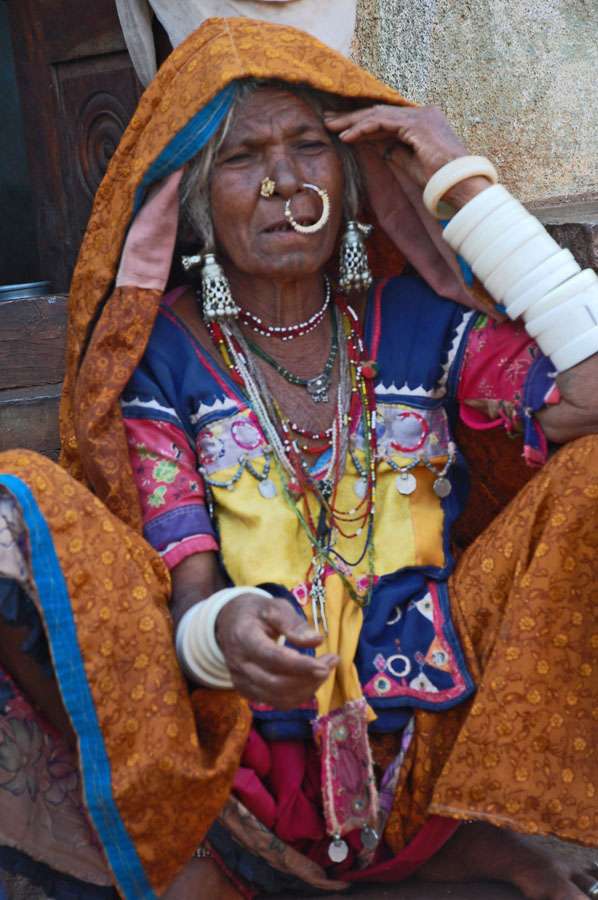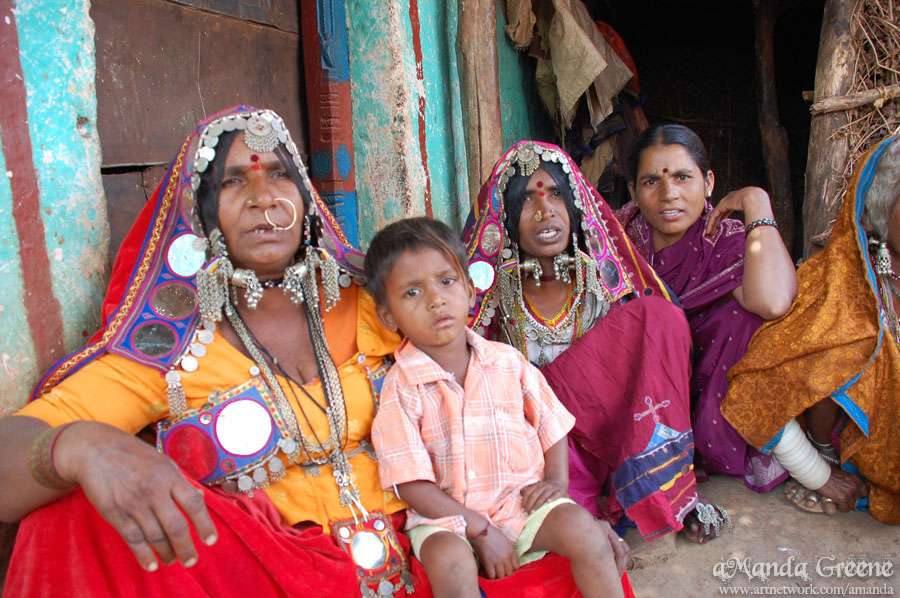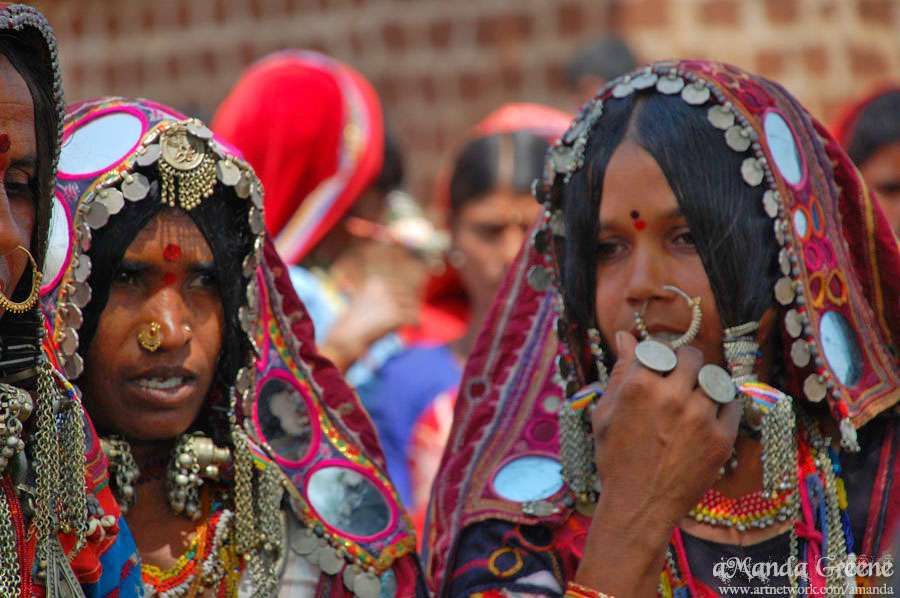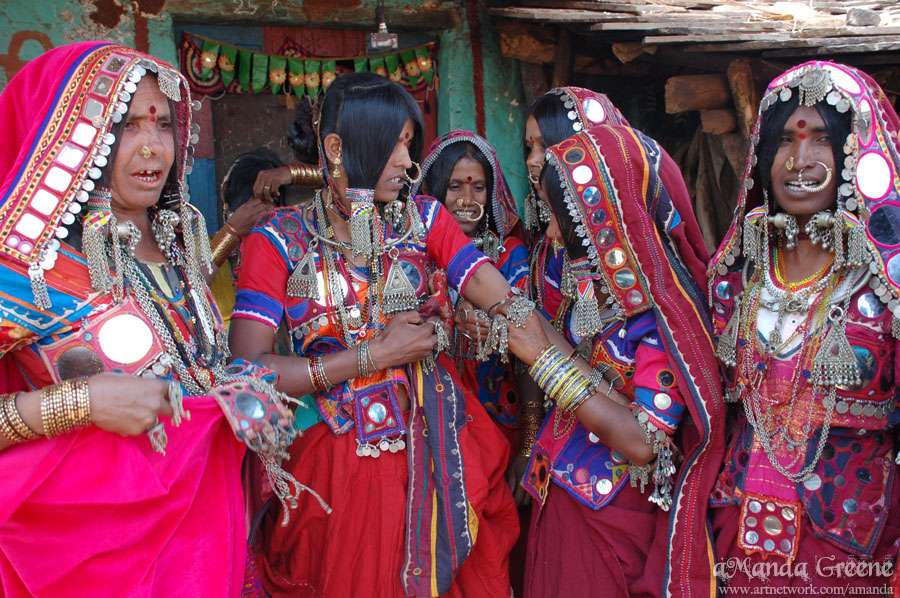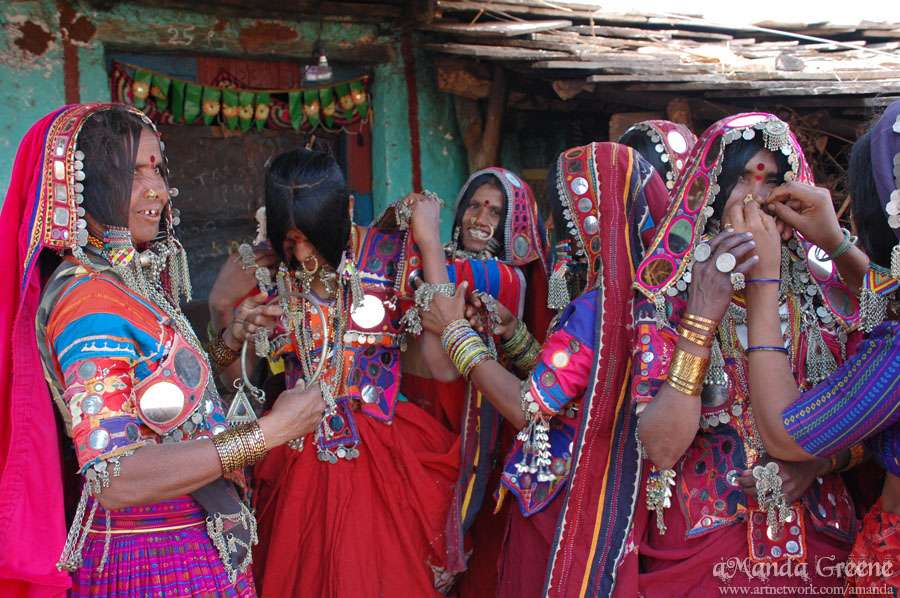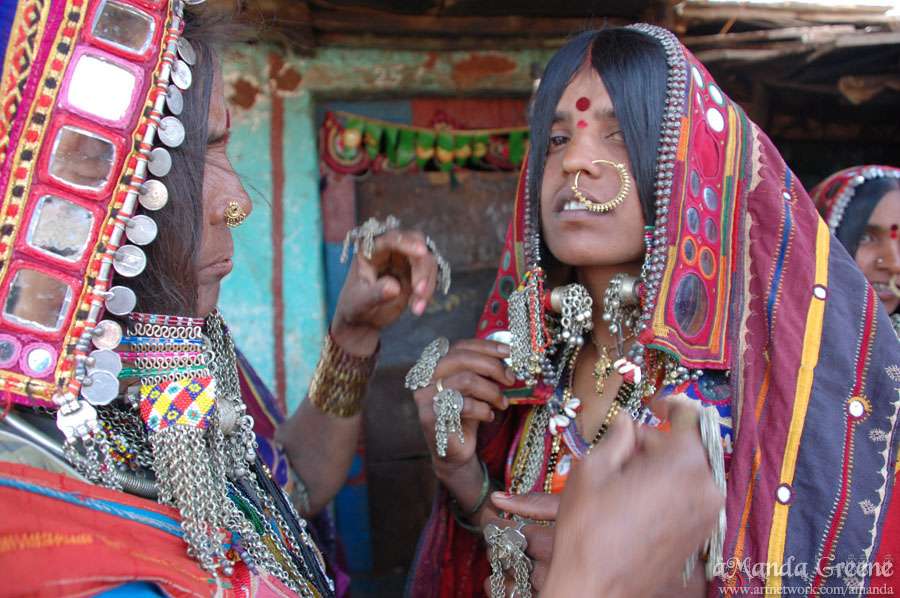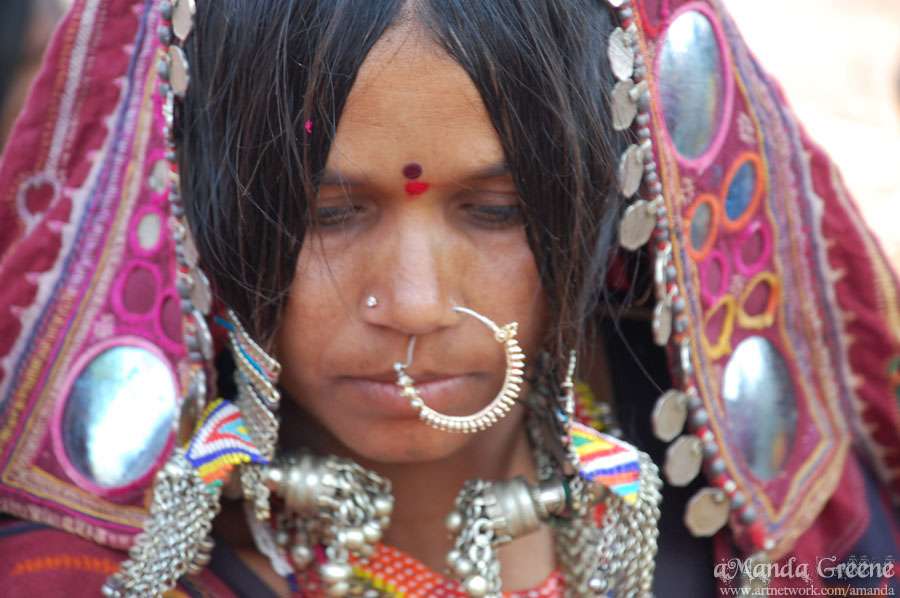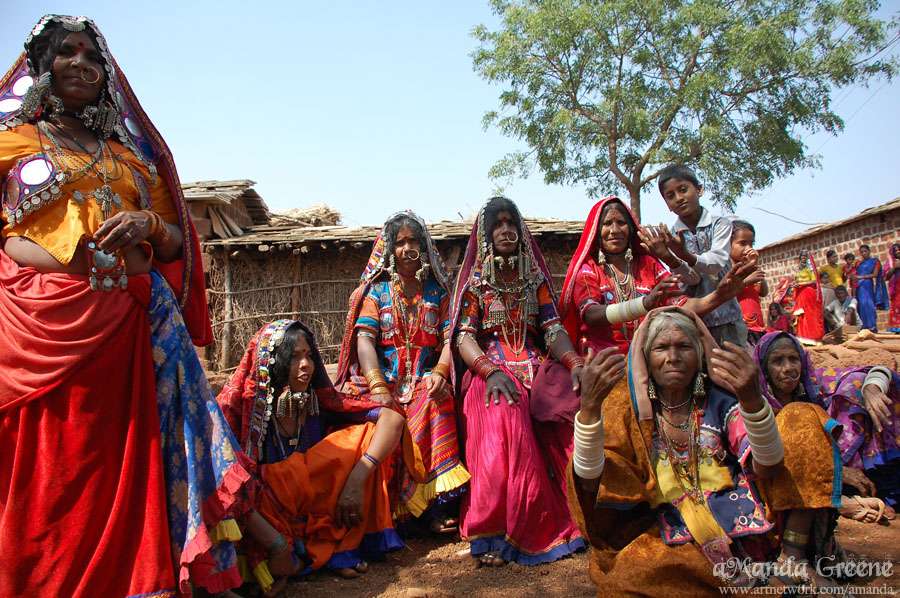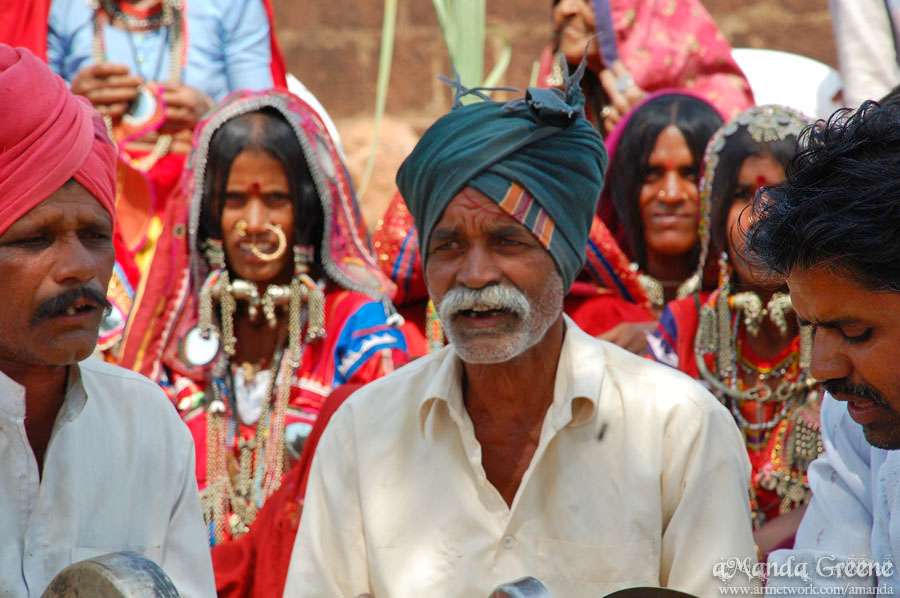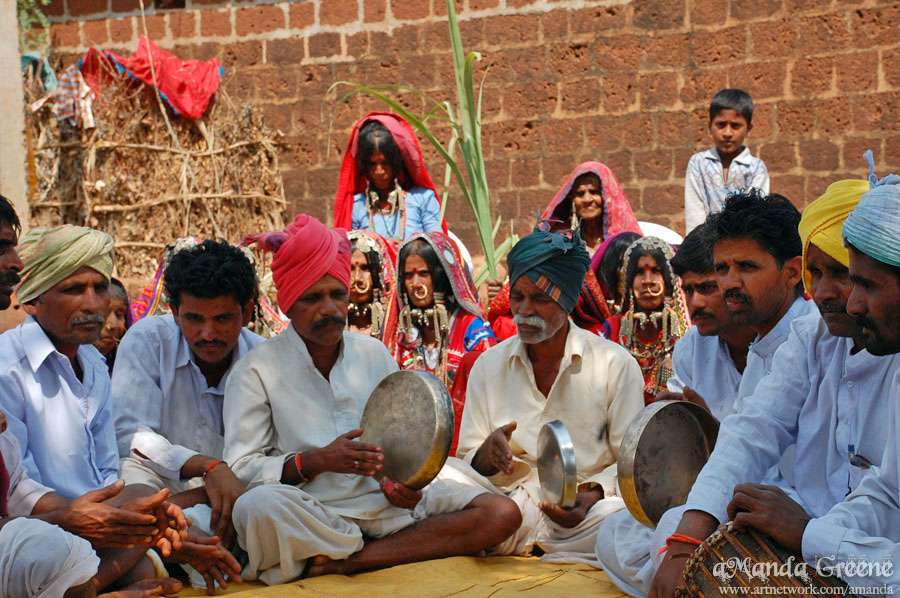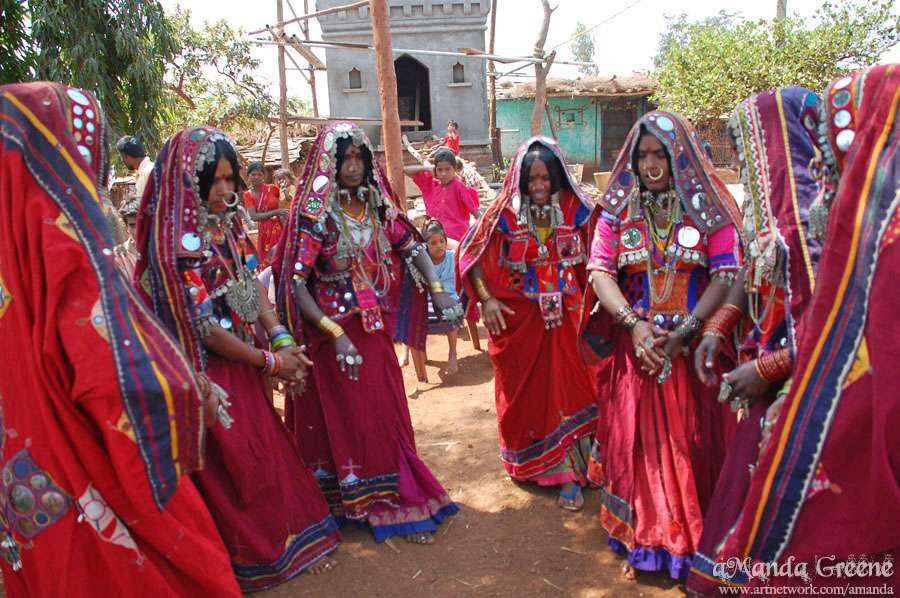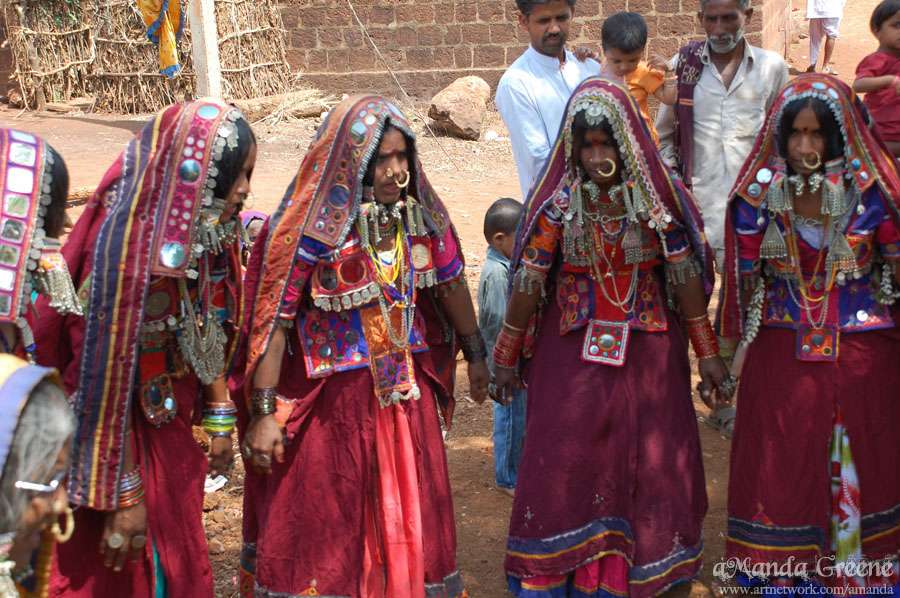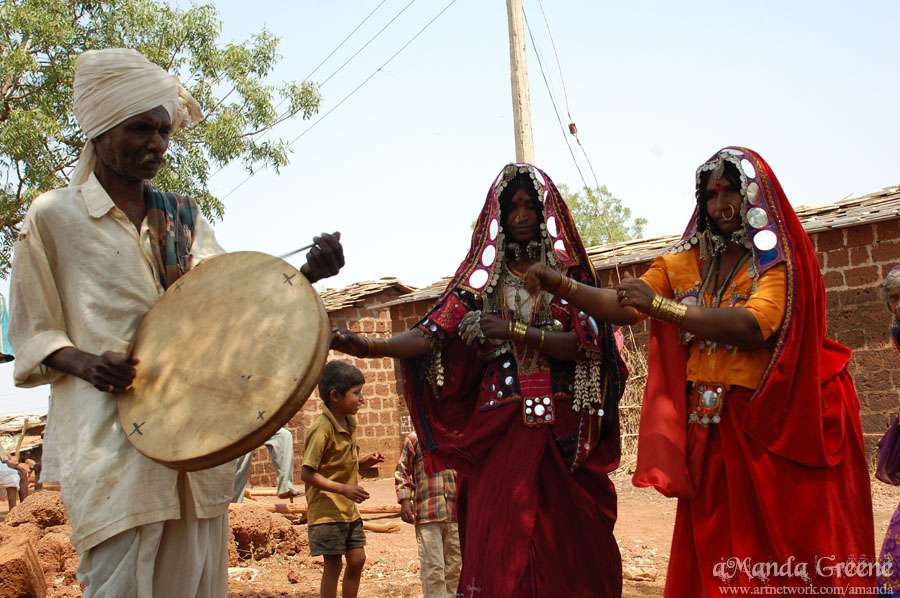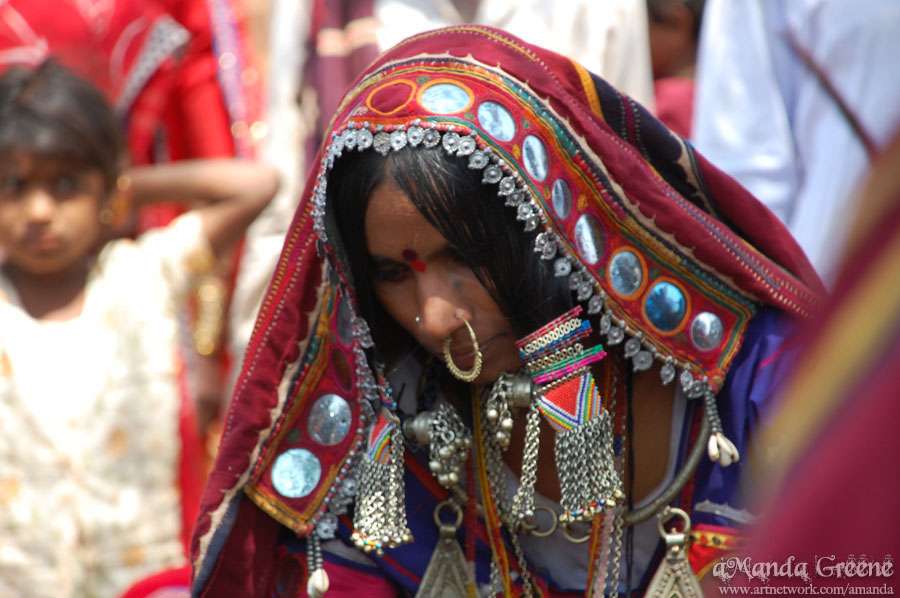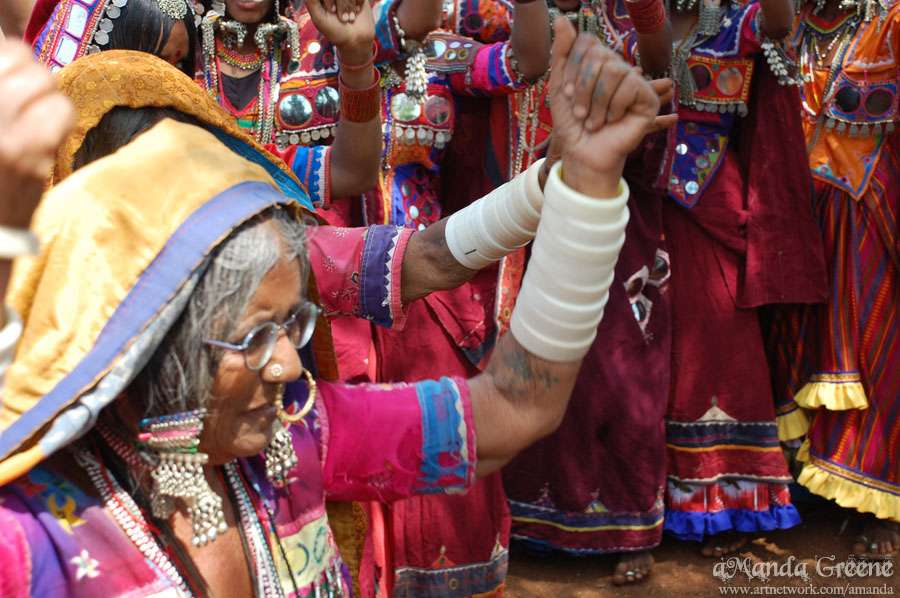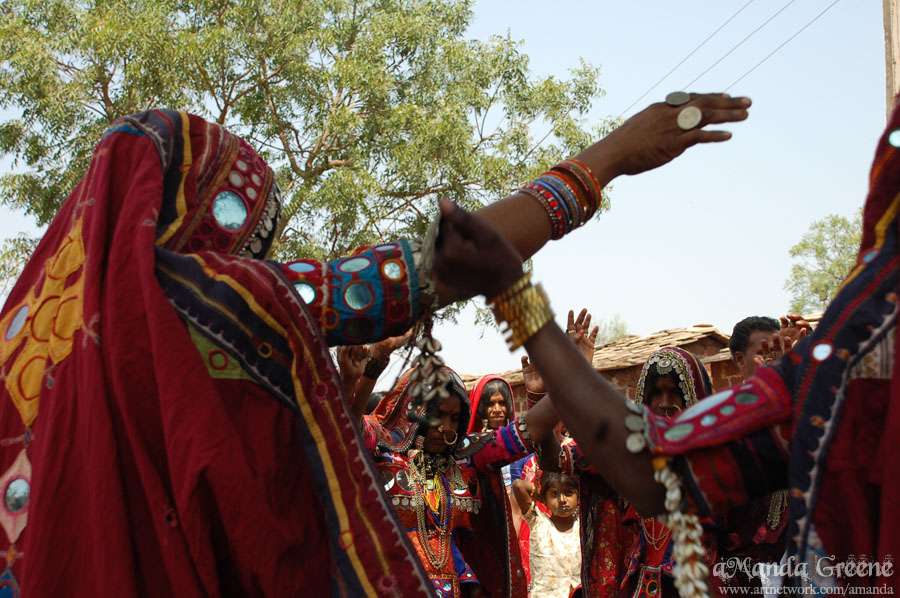Banjara -Lamani
Gallery
Amanda was part of a project of the documentation of the Banjaras tribal’s way of life. She shot these photos on display in rural west-central India in the state of Karnataka during a festival. Many Banjara-Lambanis traditional communities still live in villages in the back roads named Tandras.
Photography was a way of aManda connecting and expressing the love she felt for the people she came across in her travels. As an artist, she was able to perceive and capture details, expressions, and moments of the social history of the people and the places, that otherwise would have been lost from our memory. She lives on in the images she witnessed and captured.
The Banjaras tribal originally from North-Western India, Rajasthan and Gujarat, are also known as Lambani people in Central India. In ancient times they were nomads transporting goods like salt, grains, and cattle between villages as a way of survival. Banjara women because of their ancient nomadic way-of-life traditionally displayed their immense artistic talent on the embroidered clothes and jewelry they wore all the time. Their ancient skills, handed down from generation to generation, have been enriched by new motifs and new colors borrowed from the regions through which they passed.
Today due to the modern means of transportation, the Banjara were forced to adapt, abandon their nomadic lifestyle, and settle to work as laborers in rural areas.
Indian and European scholars in Romani studies have exposed the genetic and cultural connection of the Banjara with the European Roma (Gypsies). In recent times, Banjara and Roma themselves have recognized the link and shared forums as communities of the same genesis. (Fraser, 1992; Rochow and Matschke, 1991 Genetic study, Stanford University, CA “Origins and divergence of the Roma, 2001).




